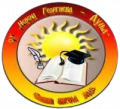One of the goals of the DREAM project is to help teachers face some challenges posed by the shift in the teaching and learning settings that took place during the COVID 19 pandemic with face to face classes becoming online classes
Now that the pandemic is over, there is no turning back on the use of digital tools in the classroom. Students are being raised in a technological age and teachers must speak their “language” through the use of IT technologies in order to engage them in the learning process and these tools can be a great way to motivate students and foster their autonomy. But students get tired of using the same games or platforms after a while, variety is, therefore, imperative, and this can be an immense challenge for teachers who struggle to find the right tools for their students.
Teachers need to do online research, they need to understand how the tools work and become proficient in using them and they need to prepare content, which is very time-consuming specially because of the immense variety of resources and the speed at which they are created by developers.
A good strategy could be to create several categories for the tools according to the type of work to be developed, for example: videos, presentations, assessment, and how to organise learning and every time teachers discover a new tool, they can add them to the list and thus keep track of what they have at their disposal.
If we think about the assessment, which is always a sensitive topic for students, parents and teachers alike, there is a number of tools that can be used for assessment purposes and that will turn the process funnier and less stressful for students. They can be used in the classroom or at home, with the teacher or parents or autonomously by the students, for formal assessment moments or just for progress check, or as assessment disguised as competitions with the participation of the whole class.
Kahoot (https://kahoot.com) is probably one of the most popular tools whose simplicity of use and competition nature makes it very attractive to students and it can be used for content review purposes, for formative assessment purposes because it is easy to export results, to do surveys.
Quizlet (https://quizlet.com) is another popular tool that can be used for progress check through the use of cards that can be presented in 5 different ways.
Socrative (https://socrative.com) is a quiz design application that can be used to create tests and quizzes to get real-time feedback on the students learning. This tool can be used by students on an individual basis by letting them answering tests and quizzes at their own pace while checking their answers, and it can also be used in the classroom by groups or teams of students engaging in competitions with the use of their smartphones or tablets.
Mentimeter (https://mentimeter.com) is another digital resource that enables creating real-time interactions such as surveys, word clouds or questions. It can be used by the entire class at the same time and it makes results visible to all.
HotPotatoes (https://hotpot.uvic.ca/) comprises six different modules with different purposes, namely JCross (crosswords), JMix (word ordering), JCloze (texts with fill-in the blanks), JQuiz (multiple choice, multiple selection, true/false, short answer quizzes), JMatch (pair association or sentence ordering), and The Masher (for compilation purposes, possibility of compiling different files with exercises, creating and index page with links to the different files).
These are just a few examples of the many resources that are available nowadays and that can be very useful to make classes more dynamic, to have students more engaged in the activities and that can contribute to well-balanced teaching and learning settings.







